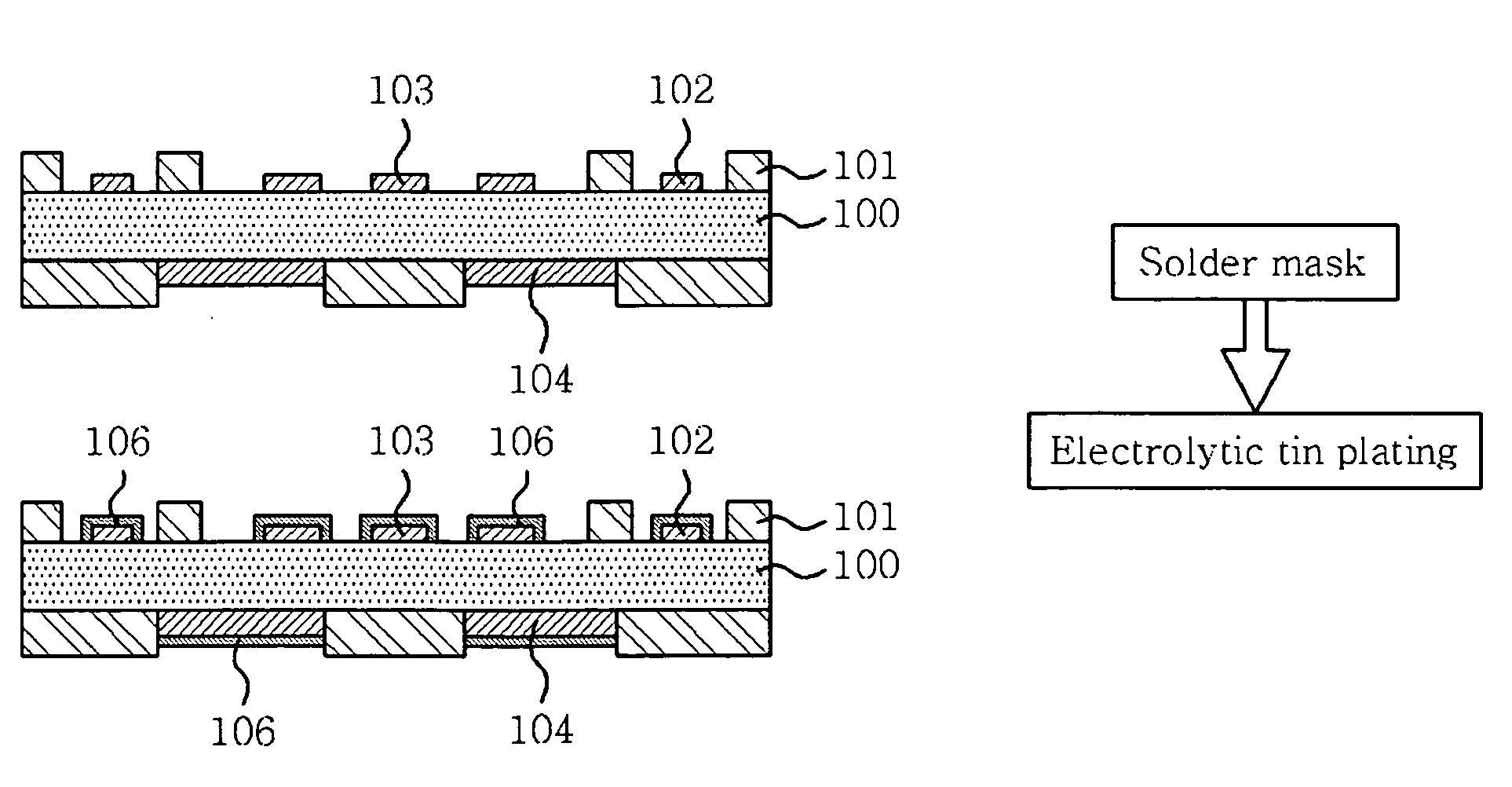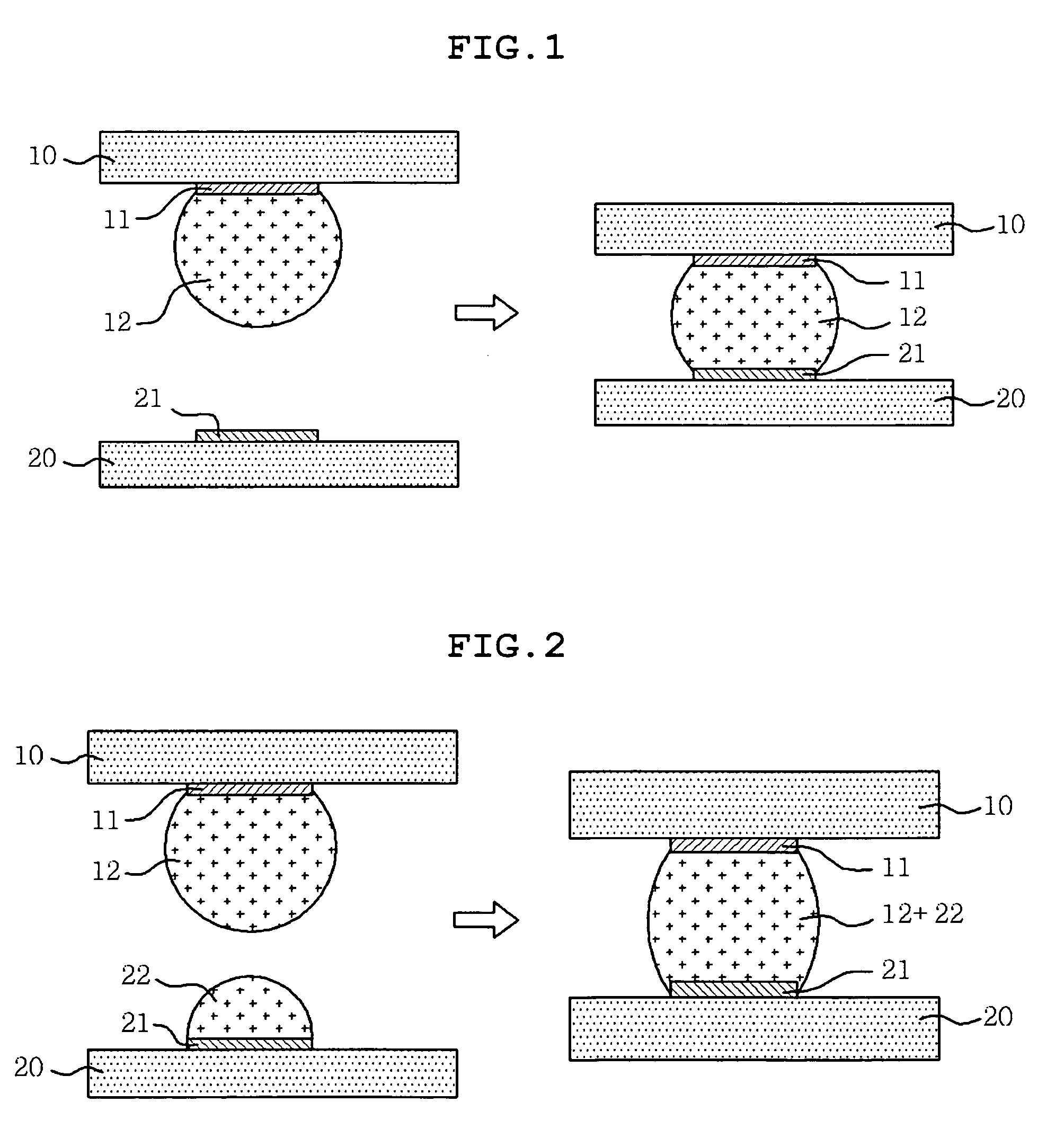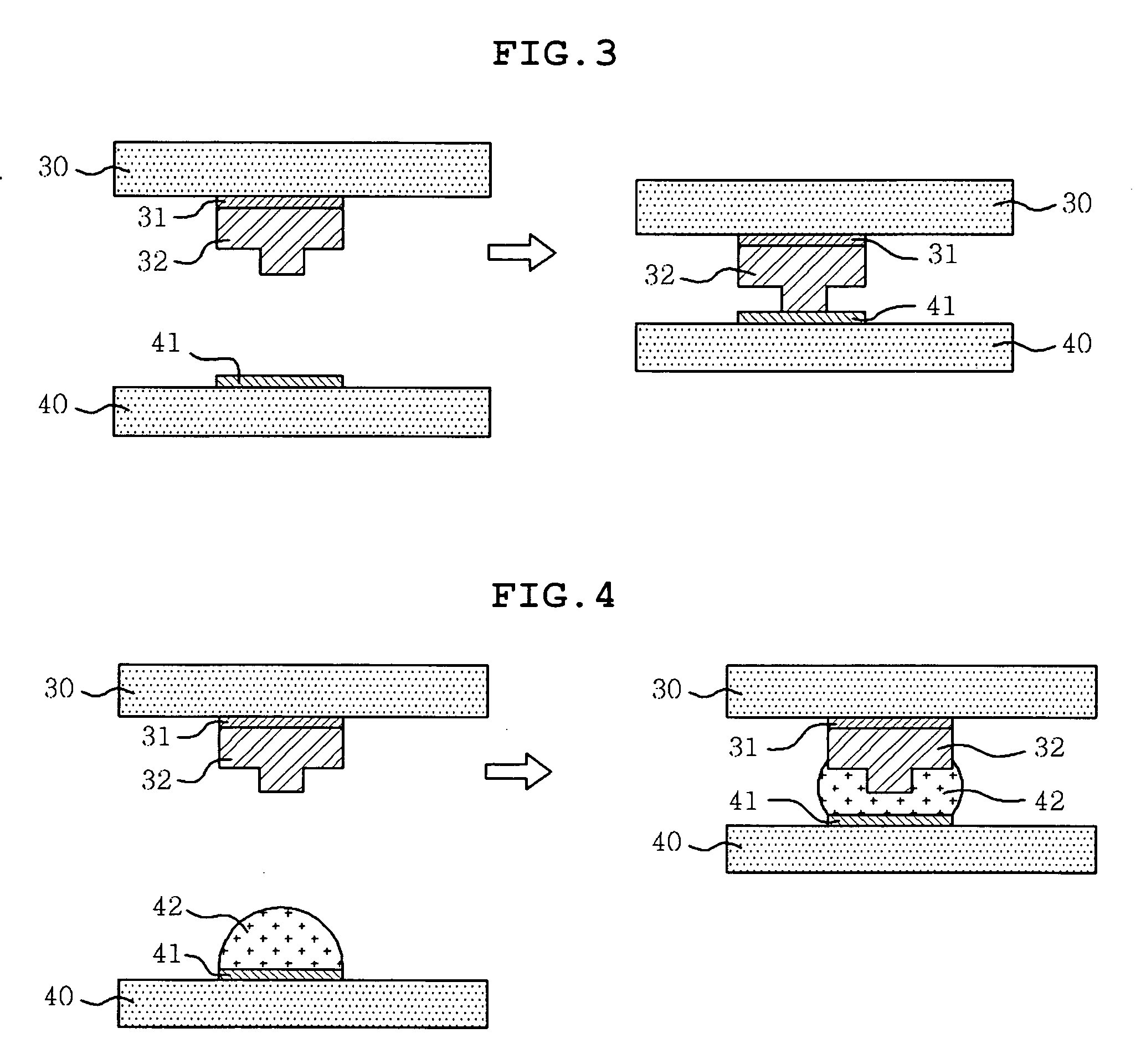Printed circuit board for semiconductor package and method of manufacturing the same
a technology of printed circuit board and semiconductor package, which is applied in the direction of printed circuit manufacturing, resist details, printed circuit aspects, etc., can solve the problems of long time period for completing a final design, and inability to meet the requirements of final design, etc., and achieve the effect of fine pitch and inexpensive manufacturing of a pcb
- Summary
- Abstract
- Description
- Claims
- Application Information
AI Technical Summary
Benefits of technology
Problems solved by technology
Method used
Image
Examples
example 1
[0070]In the product as in FIG. 7, all of a soldering portion, a bump portion, and a wire bonding portion having a mark recognizable to a camera and a mold gate for molding after mounting were subjected to tin plating. In particular, the pitch of the bump portion was set within a range of 40˜200 μm, and the thickness of the plating layer was changed depending on the pitch. In the present example, in the case of 100 μm pitch, since a bump copper circuit interval was small, in the vicinity of about 30 μm, the tin plating was performed to a target thickness of 10 μm. To this end, using a PC-MT plating solution available from Incheon Chemical, Korea, the plating process was performed at 25° C. for 25 min at 1.0 ASD, resulting in a plating layer composed of at least 99% pure tin. Additionally, the plating process was conducted at 25° C. for 12 min at 3 ASD using a UTB-TS 140 plating solution, available from Ishihara Chemical, Japan, resulting in a plating layer composed of 97.5% Sn and 2...
example 2
[0071]In the product as in FIG. 8, among a soldering portion, a bump portion, and a wire bonding portion having a mark recognizable to a camera and a mold gate for molding after mounting, only the bump portion was subjected to tin plating. The copper pads, other than the bump portion, were subjected to nickel and gold plating. As such, the bump portion was masked with a dry film so as not to be plated. Subsequently, when the bump portion was subjected to tin plating, the portion of the substrate other than the bump portion was masked with a dry film such that the nickel and gold plated portion was not plated with tin. The thickness of the nickel plating layer was 2˜20 μm, which was as thick as a general nickel electroplating layer. In particular, the pitch of the bump portion was set within a range of 40˜200 μm, and the thickness of the plating layer was changed depending on the pitch. In the present example, in the case of 100 μm pitch, since a bump copper circuit interval was smal...
example 3
[0072]In the product as in FIG. 9, among a soldering portion, a bump portion, and a wire bonding portion having a mark recognizable to a camera and a mold gate for molding after mounting, only the bump portion was subjected to tin plating. All the copper pads were subjected to nickel and gold plating. Subsequently, when the bump portion was subjected to tin plating, part of the substrate other than the bump portion was masked with a dry film such that a nickel and gold plating layer and then a tin plating layer were formed only on the bump portion. In particular, the pitch of the bump portion was set within a range of 40˜200 μm, and the thickness of the plating layer was changed depending on the pitch. In the present example, in the case of 100 μm pitch, since a bump copper circuit interval was small, in the vicinity of about 30 μm, the nickel plating layer was formed to a thickness of 1.0 μm, which was less than the thickness of a general nickel electroplating layer. Further, the t...
PUM
 Login to View More
Login to View More Abstract
Description
Claims
Application Information
 Login to View More
Login to View More - R&D
- Intellectual Property
- Life Sciences
- Materials
- Tech Scout
- Unparalleled Data Quality
- Higher Quality Content
- 60% Fewer Hallucinations
Browse by: Latest US Patents, China's latest patents, Technical Efficacy Thesaurus, Application Domain, Technology Topic, Popular Technical Reports.
© 2025 PatSnap. All rights reserved.Legal|Privacy policy|Modern Slavery Act Transparency Statement|Sitemap|About US| Contact US: help@patsnap.com



